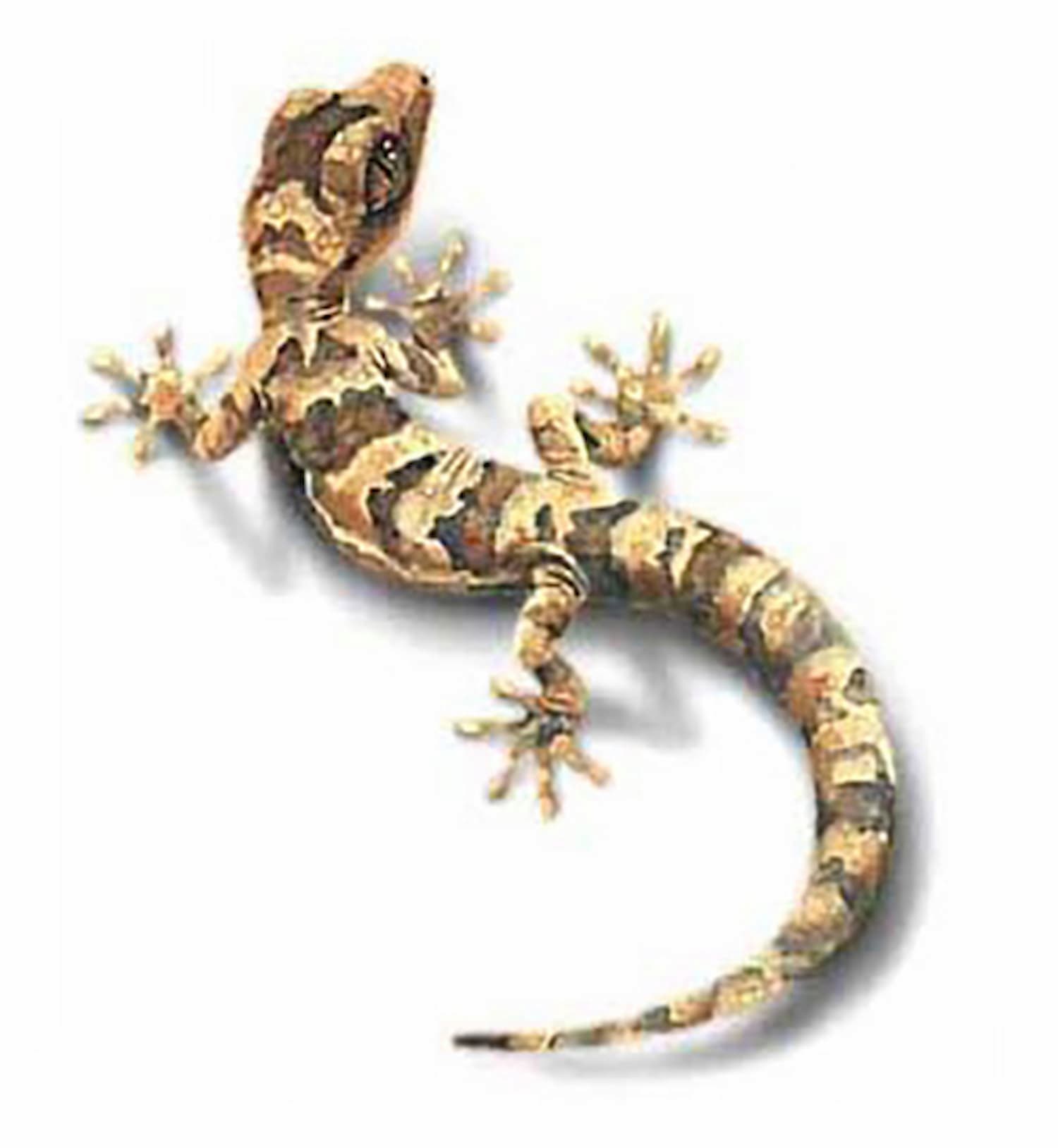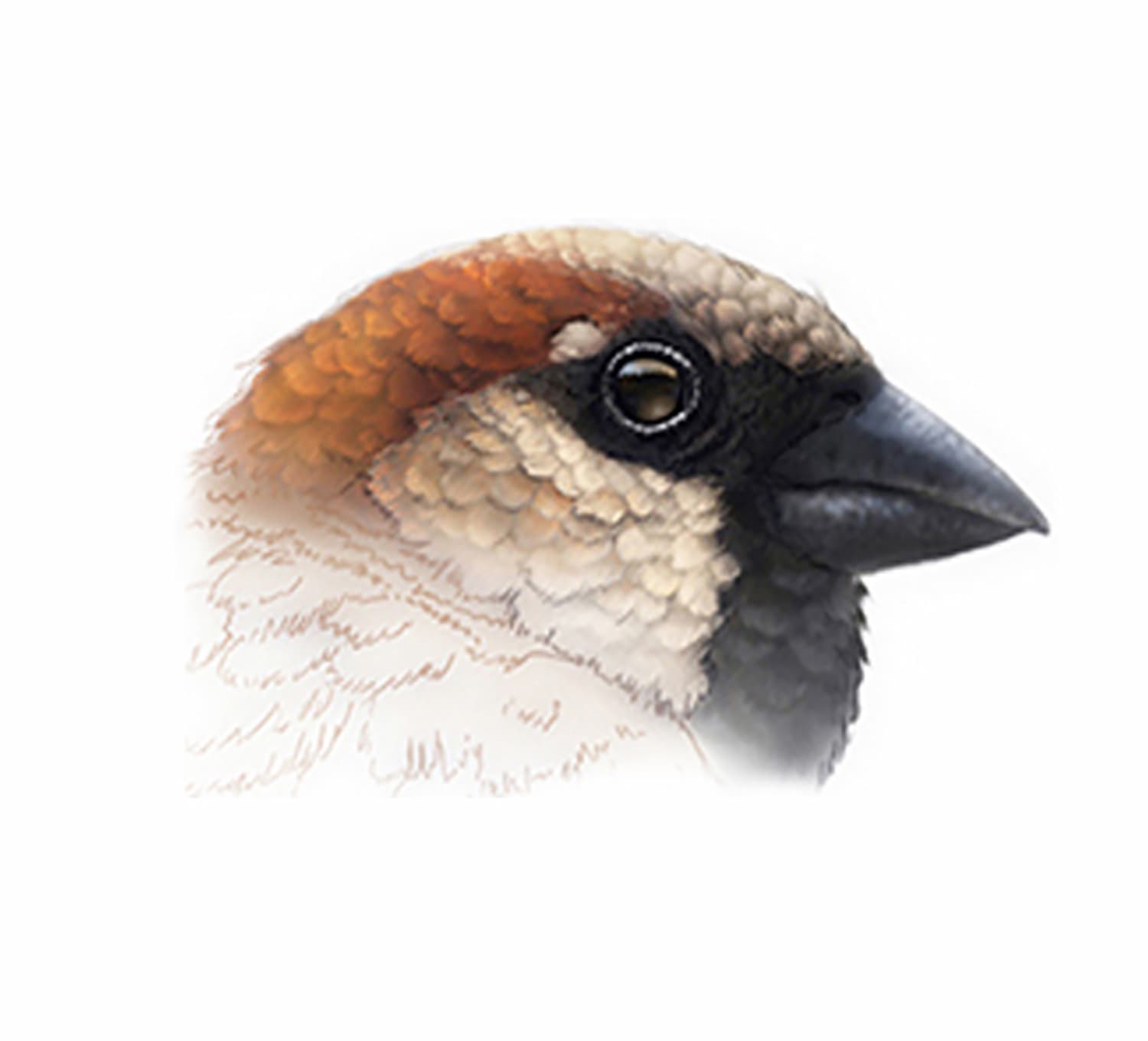Gecko and Sparrow
Gecko (Mokopirirakau granulatus)
Watercolor and Airbrush, 1987
Granulatus Geckos in New Zealand
Granulatus refers to the granular texture of the skin. Its Māori name is moko pirirākau (“lizard that clings to trees”). It is endemic to New Zealand, found in all areas except the Far North, Marlborough, and Canterbury. Forest geckos are a protected species under the Wildlife Act 1953.
“Being grey, brown or greeny-brown and having markings along their back, helps forest geckos blend into their habitat of forest and shrub. Ngahere geckos have a distinct ‘V’ shape between their eyes, white bands from corner of eyes to ears and slender toes in comparison to other New Zealand geckos who generally have short and broad toes. If that still doesn’t help you identify Ngahere geckos, they also have yellow/orange tongues. Nocturnal but love to sunbathe, these geckos are occasionally spotted on sunny branches or tree trunks where they look like the very bark of the tree. Forest geckos like to prey on insects in a motionless fashion and also eat a well-balanced diet of fruit, nectar, and invertebrates. In mid-late summer 1-2 young are born and can live at least 20 years.
In Maori mythology, lizards/geckos are associated with the death of the demi-god Maui, who by turning into a lizard attempted to stop death by invading the goddess of death; Hine-nui-te-po. The laughter of birds woke Hine and she crushed him to death which brought mortality to humans. Lizards/Geckos were also believed to have been spiritually associated with the god Whiro who was responsible for all things evil. Maori would invoke a lizard into a man’s body to eat away his life-giving organs to appease angry gods.”
–Zealandia
I used to capture geckos from stretches of native bush behind my uncle Dennis’s house in Forest Hills, Auckland, and kept half a dozen for several years in a home-built, wood and black-plastic-mesh terrarium, feeding them every few days with flies, caught near our compost bin. They are quite tame and will quietly sit on your finger, staring at you with their mesmerizing swirled and slitted eyes, occasionally licking an eyeball with their bright orange, broad, glutinous tongues. They catch flies by creeping slowly toward them then pouncing lightning-fast and flicking their tongues out to “glue” the insects, in much the same way as frogs, with their long tongues do.
This painting of a Granulatus gecko became part of the logo for my Australian design and illustration firm, Studio Gecko.
The house sparrow (Passer domesticus)
Digital Painting, Corel Painter, 2008
House Sparrows in New Zealand
House sparrows were introduced to New Zealand first in the mid 1860s. They soon became abundant and were said to be combating plagues of agricultural pests. By the 1880s, however, they were regarded as pests. House Sparrows, along with Starlings, are now the most ubiquitous birds found in New Zealand cities and suburbs. They are gregarious, gathering in small flocks of between 6 – 20 birds, and intermix while feeding with other introduced species – starlings, thrushes and magpies.
Males are smart chestnut-brown, white-and-grey with a distinctive black “bib”; they are difficult to confuse with any other species. Females and young lack the bib and are greyer, with lighter brown dorsal plumage than the male. Their underparts are plain grey, but their backs and wings are variegated several shades of brown and white. The robust conical bill is black in breeding males, otherwise pale pinkish-brown. The eyes are dark brown and legs dull pink.
I would coax sparrows onto my finger by patiently holding out my breadcrumb-filled hand as a child, and would study their subtle, but attractive markings in great detail.



